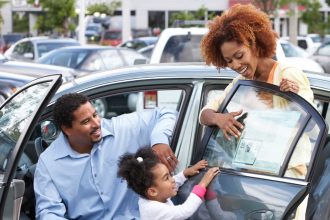MoMo Productions/Getty Images
Key Takeaways
- A split direct deposit divides a portion of each of your paychecks between multiple bank accounts – typically a checking account and a savings account.
- By programming a certain amount to land in a savings account from every paycheck, you can train yourself to live on less everyday spending cash.
- If your employer doesn’t offer the ability to split your direct deposit, you can set up your own system that automatically transfers money to a dedicated savings account each month.
Americans work for a range of companies, doing a wide range of different job functions and earning a wide range of salaries, but the vast majority of them share one thing in common: They get paid via direct deposit. According to data from Nacha, the organization in charge of the ACH payment network, 92 percent of people receive their paychecks via direct deposit.
Split direct deposit takes that paycheck and divides it between multiple accounts. Why would you want to deposit your money into more than your checking account? Because it’s an easy way to make sure that every time you get paid, you also save.
How to set up a split deposit
Here’s how to get started with split deposit:
Talk to your company. Check with your payroll department or log into your payroll system to see if split direct deposit is an available feature. This process may be called changing your bank elections, or it may be under the choice of adding or editing your accounts. Some employers may have a form that you’ll need to fill out.
Determine if you want to split it by percentage or a flat dollar amount. Think about your budget and how much you can comfortably live without in your checking account each month to send to your savings account. If you set aside a percentage amount, that will automatically update whenever you get a raise to reflect your new earnings. You can always start with a relatively small amount of money to make sure you aren’t stretching yourself too thin and then update to save more aggressively later.
Share the account and routing number of the savings account with your company’s payroll system. Once you’ve figured out how much you want to save, input the bank details for the new account to start splitting your direct deposit.
Even if your employer doesn’t offer split deposit, you can effectively accomplish the same thing by setting up recurring transfers from checking to savings automatically at your bank. For example, if you know you’ll receive a deposit on the first of the month every month, you could set up a recurring transfer for a portion of that into a savings account for the second of the month.
Benefits of splitting your direct deposit
You can automate your savings
Ask just about any financial planner for advice on how to save more, and automation will likely be near the top of the list. By automatically putting part of your paycheck in a savings account, you’ll start to get comfortable with less money to spend. Sure, you can transfer money from that savings account into a checking account, but it’s one more hurdle to put in front of your spending power.
It doesn’t cost you anything
While you might be accustomed to dealing bank fees, splitting your direct deposit comes with the best kind of price tag: It’s free.
You can start building a better cushion for your finances
Just under 6 in 10 (59 percent) U.S. adults are uncomfortable with their emergency savings, according to Bankrate’s 2025 Annual Emergency Savings Report. If you’re one of them, split direct deposit is one of the easiest ways to solve that problem and reduce the anxiety about a potential worst-case situation for your finances. And if you’re assuming that a small deposit in your savings account of just $20 from every paycheck isn’t going to do much, think again: Small savings can add up to a big difference over time.
Cons of splitting your direct deposit
It might require a bit of work
Depending on your company’s payroll system, split direct deposit may require a phone call or two to update your payment preferences. And if you don’t have a high-yield savings account yet, you’re also going to need to shop around for a new financial home where your savings can grow. However, those extra steps are ultimately a small hassle that adds up to a big difference in your life.
You might feel scared about having less money in your checking account
Wait, you might say, what if I wind up struggling to balance my budget? What if my checking account dips below the minimum balance requirement? These are valid concerns, and you should start slowly – with a smaller amount – to make sure you’re comfortable with your new routine. Once you start seeing your savings account grow, revisit your splits to see if you can increase your savings amount.
Bottom line
Saving money can feel really challenging. However, splitting your direct deposits is one of the easiest ways to get your finances on track toward a brighter future. Whether it’s a percentage of your paycheck or a set dollar amount each payday, having your money automatically moved into a high-yielding savings account allows you to beef up your savings — and chances are you won’t even miss it.
Read the full article here














